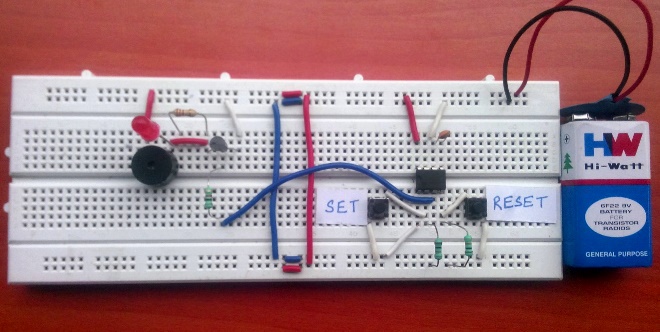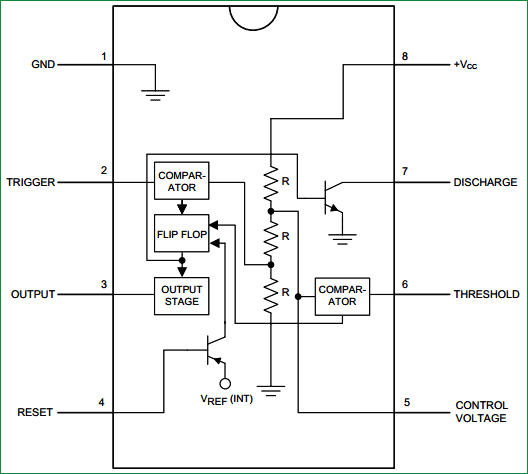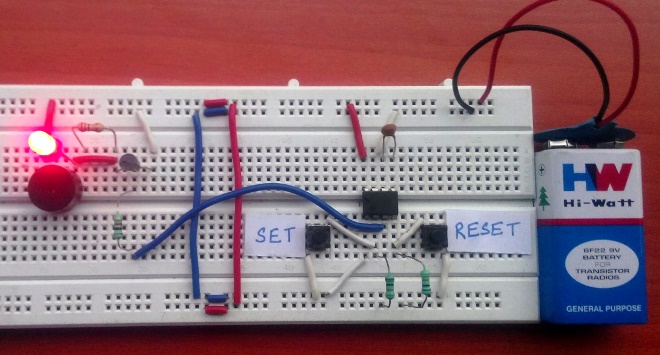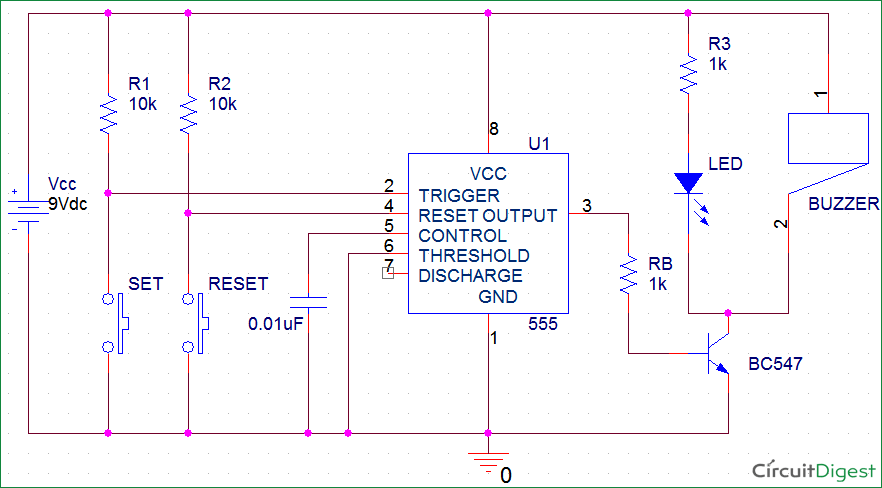
A Panic Alarm Circuit is used to send an emergency signal immediately to the people in nearby location to call for help or to alert them. The possible panic situation can be any, it is not restricted to few situations. One could possibly keep the push button at a hand reachable distance or comfortable place it to carry out quick action in silence by pressing a single button. The indication of emergency can either be in the form of visible or audible signal, which can be fixed at a few meters away through wire.
Also, this can be done using low cost components. The key component we use here is a 555 timer IC. The signal produced by the 555 can handle only a few mA. So, we have used a transistor BC547 as control switch whose control pin requires only small current which in turn handles more current. The BC547 can be replaced by any other NPN transistor part according to the voltage and current rating of the alarm and light used.
Components required:
- 555 Timer IC – 1
- Transistor BC547 – 1
- Buzzer (6-12V) – 1
- LED – 1
- Tactile switch – 2
- 9V Battery with holder – 1.
- Resistors (10kὨ – 2; 220Ὠ - 1; 1KὨ - 1)
- Ceramic capacitor(0.01uF) – 1
Panic Alarm Circuit Diagram:
Below is the circuit diagram of the panic alarm button using 555 IC,
Configuration selection:
There are three popular configurations of 555 timer IC,
They differ by the number of stable states in the circuit. In our case we need two stable states. One state is alarm ON and another one is alarm OFF. So here we have configured 555 in Bistable mode. On pressing a button, a signal should be sent to the location in audible and visible form. In order to turn OFF the alarm we use another button either at our place or at the place of indication. Here a Simple Panic Alarm with low operating current is done.
Operation of Panic Alarm:
Below it the internal structure of 555 Timer IC, learn more about the 555 Timer IC here.

- Initially, TRIGGER pin 2 and RESET pin 4 are pulled up using resistors R1 and R2. On pressing the SET button the trigger pin 2 goes low (<Vcc/3) making the output of lower comparator inside 555 to go high for an instant. This sets the flip-flop and the OUTPUT pin goes high and remains in this state until an external reset signal is given.
- The process of resetting the 555 is done by pressing the RESET button. This makes the RESET pin go 4 low (<Vcc/3) for an instant which is connected directly to flip-flop through transistor. Hence, the flip-flop is reset and the output becomes low and stays in this state until the next trigger is given.
- The output signal reaches the base terminal of BC547 and the transistor turns ON. Now the buzzer and LED connected to transistor also turns ON. The NPN transistor is a current controlled device. Learn more about NPN Transistor here.
- The NPN transistor is used as a control switch whose control signal is provided by the 555 IC. Based on the control signal to base terminal, the current flow from collector terminal to emitter terminal occurs.
- The Transistor control or relay control will be reliable choice for a control switch.
Working:
When the SET button is pressed LED gets turned on and buzzer starts beeping,

When RESET button is pressed the LED and buzzer goes OFF.







This circuit is very neat , but do you mind adding in an explanation on how the circuit itself works?